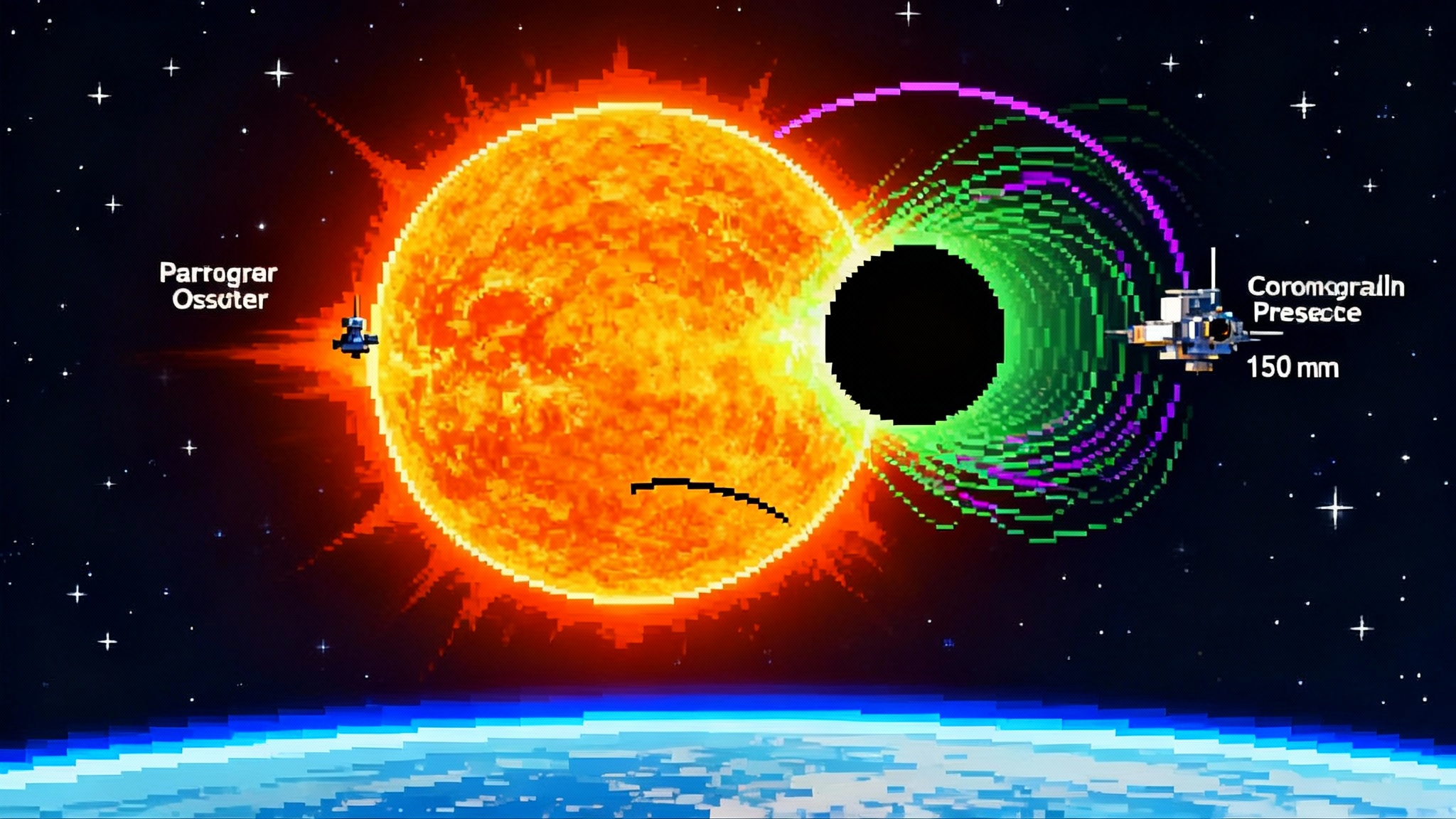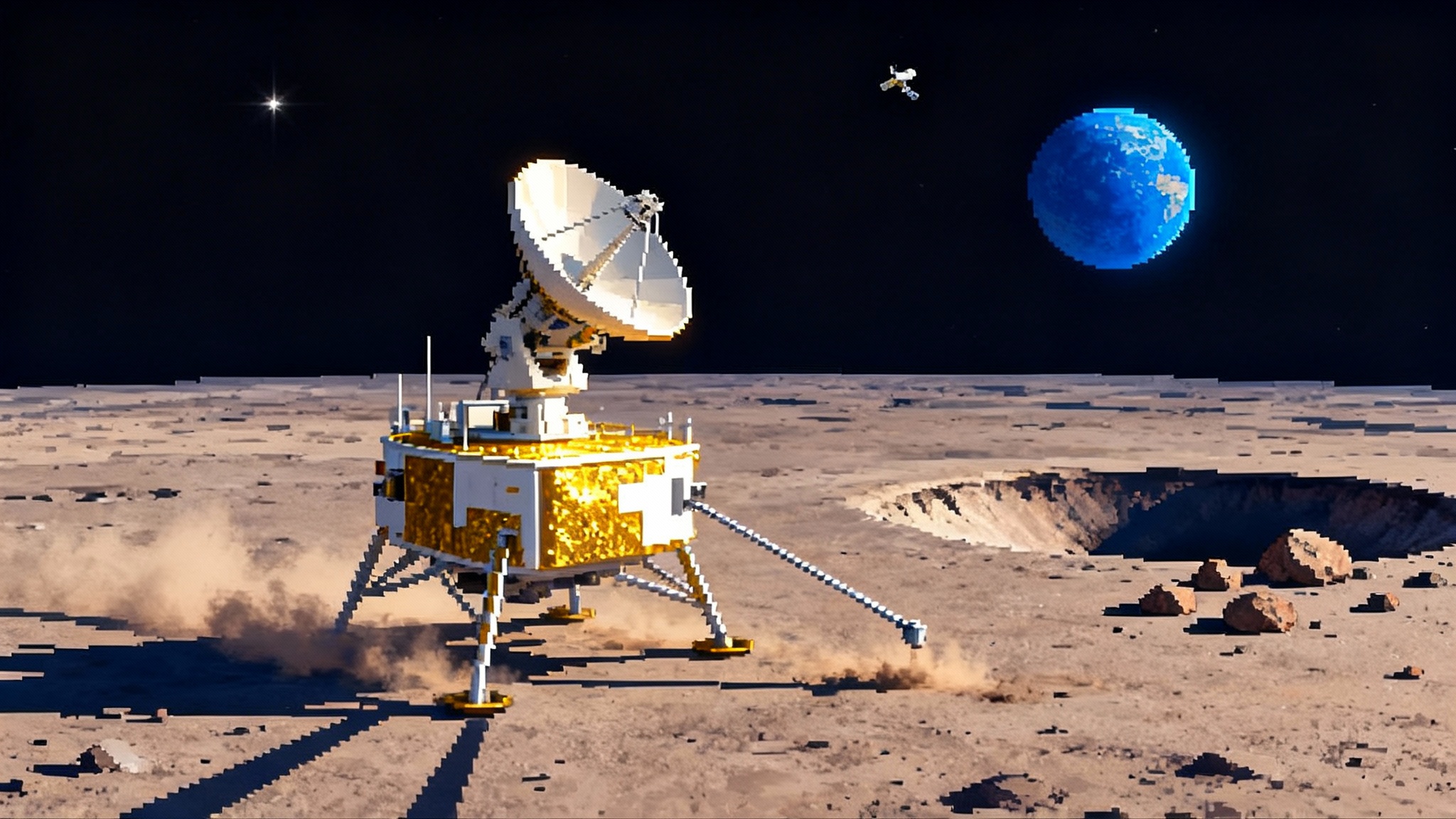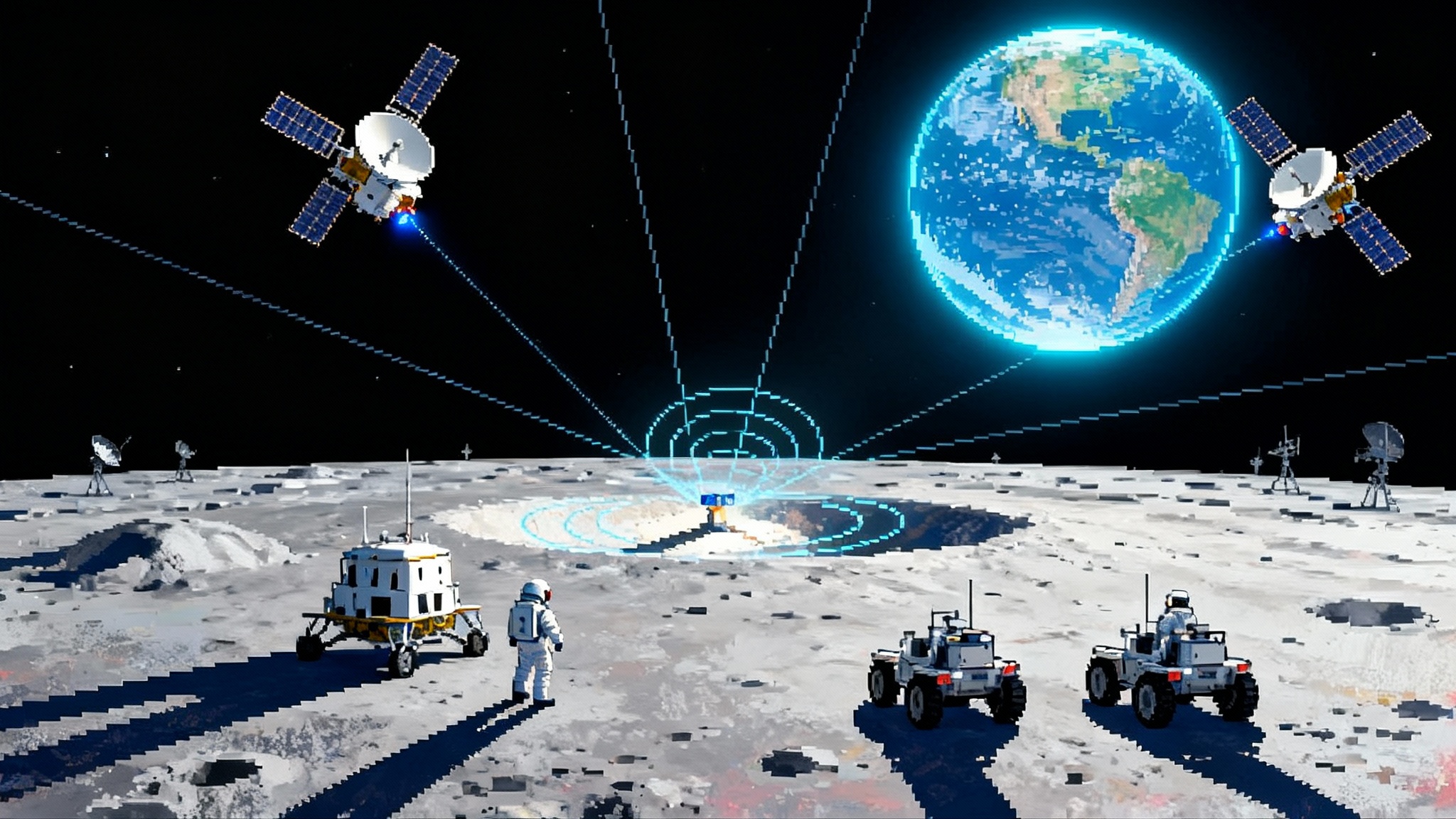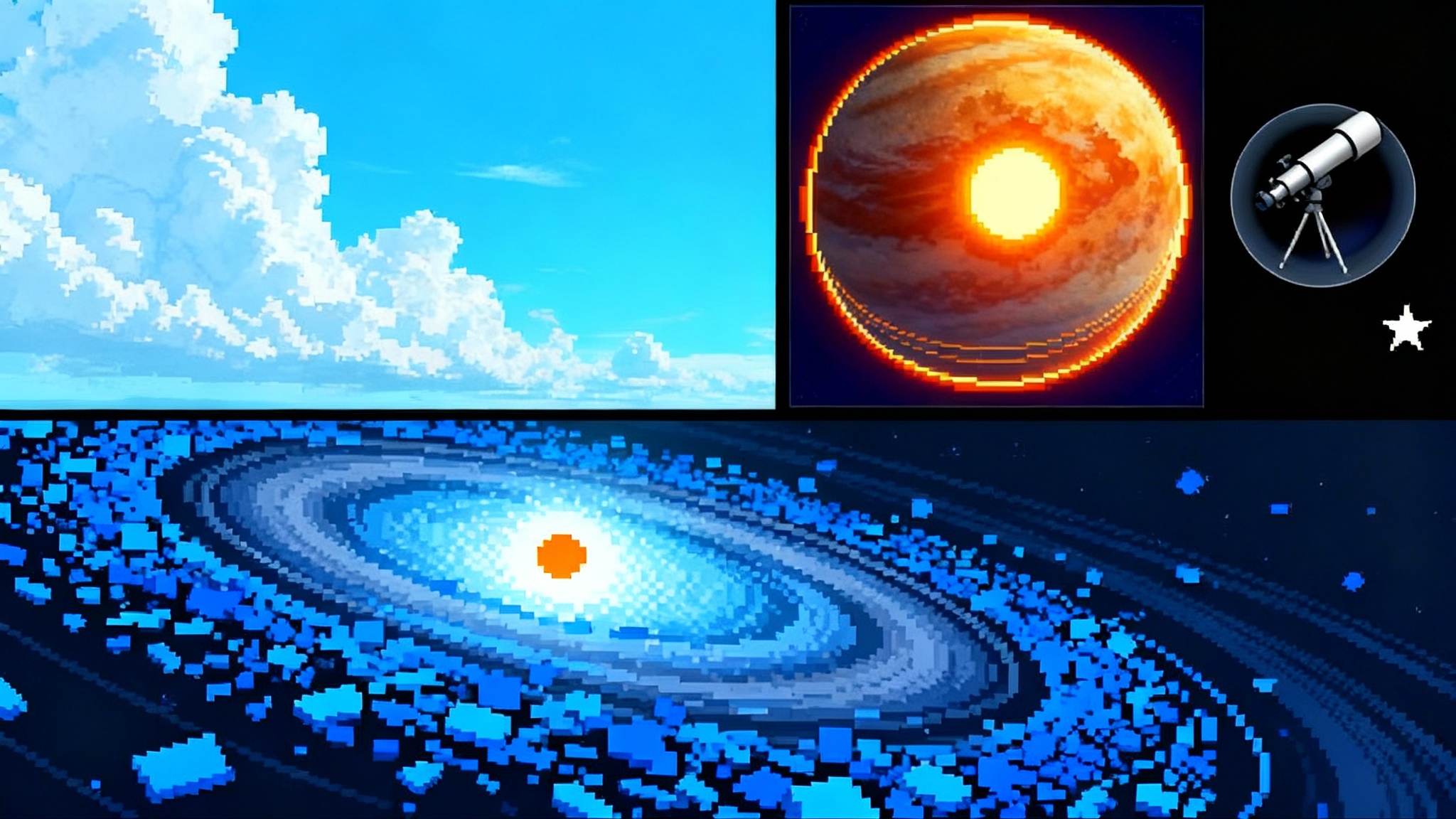Proba-3’s Artificial Eclipses Crack Open the Inner Corona
ESA’s Proba-3 has created artificial eclipses in orbit, exposing the Sun’s inner corona just as NASA’s Parker Solar Probe skimmed the atmosphere below. Together they are reshaping how we see coronal mass ejections and how we forecast space weather.

Breaking the Sun's last veil
A new kind of eclipse is redefining solar science. Two small European spacecraft, flying in lockstep a short distance apart, have turned night into day on command and let us peer into the Sun's inner corona, the birthplace of the biggest solar storms. As those artificial eclipses arrived, NASA's Parker Solar Probe was swooping through the corona itself, tasting the plasma and magnetic fields that drive eruptions. The combination is electric. It is already changing how scientists think coronal mass ejections begin and how fast grid operators, satellite teams, and astronaut crews can act as solar maximum peaks.
The first public images from these orbital eclipses came this spring. They are not just pretty pictures. They are the missing frames from a story physicists have been trying to watch for decades, the moment when stressed magnetic fields above sunspots let go and fling billions of tons of plasma into space.
Why the inner corona stayed hidden for so long
The Sun poses a simple problem that has defeated generations of instruments. Its surface is millions of times brighter than the faint gossamer halo above it. Looking for coronal details next to the blinding disk is like trying to photograph a firefly beside a stadium spotlight. Traditional coronagraphs place a small disk inside the telescope to block the glare, but that disk scatters light and leaves a glare-filled gap close to the Sun. From Earth, total solar eclipses solve the glare problem for a few minutes at a time, but they are rare and brief, and the weather does not always cooperate.
Everything important about the birth of a coronal mass ejection happens right in that gap. The magnetic fields are twisted, plasma loops inflate, and narrow jets hint at reconnection. If you cannot see that region cleanly and continuously, you cannot reliably model how and when a solar storm will launch or how strong it might be when it reaches Earth.
How Proba-3 makes an eclipse on command
Proba-3, a European Space Agency mission, solves the glare problem with choreography. It splits the coronagraph into two satellites that fly in formation. The Occulter spacecraft carries a disk that blocks the Sun. The Coronagraph spacecraft carries the telescope. They hold a separation of about 150 meters, and they keep their positions steady to within millimeters for hours at a time. The Occulter throws a tiny shadow, only a few centimeters wide, onto the telescope 150 meters away. When that shadow is locked in place, the telescope sees the inner corona in daylight conditions without the usual glare.
This is precision formation flying turned into a scientific instrument. The pair use cameras that track blinking lights, a laser ruler that measures lateral drift, and tiny thruster puffs to stay aligned without constant help from the ground. The navigation and guidance software runs autonomously. A single instrument, ASPIICS, then records the corona in visible light, polarized light, and two narrow spectral bands that highlight hot iron and helium. Because the occulter is far from the telescope, stray reflections are dramatically reduced and the view reaches to within almost a solar radius of the limb, into a zone that has been largely inaccessible from space.
In May and June, the team released the first inner corona views captured during an artificial eclipse. Those frames revealed delicate hairline structures, faint inflows and outflows, and a textbook prominence arching above the limb. You can see the mission's achievement in the first artificial eclipse images from Proba-3.
What the new images actually show
Look closely at the images and you notice three kinds of information that matter for forecasting.
- Geometry. Streamers, loops, and cavities are drawn with crisp edges. These shapes reveal how the magnetic field is arranged. A flux rope curling up from a sunspot region has a different signature than a streamer that is simply swelling.
- Temperature clues. The iron green line highlights plasma at around a couple of million degrees. The helium D3 line picks out cooler, denser structures like prominences. Seeing both at once tells you which parts are heating and which are still cool enough to be unstable.
- Polarization. Polarized white light separates the true coronal signal from the background light scattered by dust. That subtraction improves contrast and lets scientists follow faint flows heading outward and fainter inflows that sink back.
Each of these layers feeds the physics of how an eruption starts. You can watch a cavity slowly rise, trace the neck where a current sheet will form, and time the switch from slow inflation to rapid acceleration. Those are the numbers forecasters need to initialize models with fewer assumptions and less guesswork.
Enter Parker Solar Probe, sampling the storm from inside
At the same time Proba-3 was opening up the inner corona from a distance, NASA's Parker Solar Probe was diving through it. In March and again in June 2025, Parker matched its closest approach at roughly 3.8 million miles above the solar surface, moving at about 430,000 miles per hour. The spacecraft measured the magnetic field, plasma speed, density, and energetic particles in conditions that no instrument has sampled before. NASA summarized the June pass as the mission's 24th close approach, and noted that Parker will continue operating as plans for the next phase are reviewed in 2026. Read the highlights in NASA's note on the 24th close approach at 3.8 million miles.
Why does this pairing matter? Think of Proba-3 as a high-speed security camera catching the moment a door bursts open, while Parker is the person standing in the hallway feeling the blast of air. The camera shows the geometry and timing at the door. The person's measurements record the pressure wave and debris in motion. Together you can reconstruct the whole event, not just infer it.
Cracking the birth of coronal mass ejections
There are two leading scripts for how big eruptions begin. In one, called breakout reconnection, magnetic fields high above the active region peel away and release tension, letting a flux rope climb and escape. In the other, called tether cutting, reconnection begins low and builds the flux rope that then explodes outward. Distinguishing the two requires sharp eyes on the inner corona to see where and when brightening starts and how fast the flux rope accelerates. Proba-3's clean view finally shows the telltale signatures while they are still small and faint.
Parker adds the punchline. If Proba-3 sees an eruption starting, and minutes to hours later Parker senses a certain magnetic twist and particle spectrum, scientists can map cause to effect. Repeat that during multiple eruptions, and the models stop being tuned by averages. They get trained on real sequences, with real timing.
That change has immediate consequences. The early acceleration profile near the Sun determines the final speed. The magnetic orientation of the flux rope determines how strongly it can connect with Earth's field and drive geomagnetic disturbances. The density and temperature near the launch region influence how the shock forms, which affects radiation risks for astronauts. Each of these parameters is something Proba-3 and Parker can now pin down together.
Forecasting moves from hours to decisions
Better physics helps only if it flows into better choices. This is the same shift that ground-based surveyors made when they embraced a real-time sky firehose of alerts and rapid follow-up.
- More reliable launch detection. Proba-3's polarization and spectral views let forecasters spot the decisive moment when a prominence detaches or a cavity erupts, even when the launch is partially hidden on the limb.
- Cleaner initial conditions for models. Assimilating geometry, acceleration, and density from the inner corona reduces the range of arrival times in heliospheric models. That translates into narrower windows for when a storm will strike Earth.
- Field orientation clues. If early images imply a left-handed or right-handed twist in the flux rope, and Parker later confirms the sign and magnitude of the magnetic field, forecasters can refine the expected disturbance level before the storm arrives.
- Radiation alerts with context. Particle detectors aboard Parker, when combined with Proba-3's view of the shock formation, help quantify when radiation levels at the Moon or on deep-space transits could exceed thresholds.
What grid operators, satellite teams, and mission controllers can do with this
- Electric power grids. When the models converge earlier on a strong arrival, control rooms can temporarily lower transformer loading, pre-position spare capacity, and alter switching to limit geomagnetically induced currents. Utilities already do this during major warnings. The difference is better lead time and fewer false alarms, which reduces the economic cost of standing by.
- Satellite operators. If the forecast indicates strong drag for low orbits, teams can raise altitude preemptively for stations with limited propellant or schedule momentum dumps, attitude tweaks, and critical maneuvers outside the most disturbed hours. Operators can also safemode sensitive instruments and reorient spacecraft to minimize cross-sectional area during peak drag or charging conditions.
- Astronaut crews. Planners can adjust spacewalk schedules on the International Space Station and factor radiation shelter time for lunar and deep space missions. With earlier, more confident alerts, crews can shift tasks inside habitats, move to storm shelters, or revise timelines to avoid peak exposure. This dovetails with building a resilient lunar navigation grid that bakes space weather into operations.
None of these actions are new in principle. What changes is the confidence and timeliness. Proba-3 and Parker shrink the guesswork that leads either to overreaction or to missed hazards.
The engineering behind the science, and why it matters
Proba-3 is also a technology story. Keeping two spacecraft 150 meters apart with millimeter accuracy, while aiming the shared instrument at the Sun, is a milestone for spaceflight. The guidance loop blends a visual system that watches LED beacons with a fine laser sensor that measures lateral drift. A shadow sensor on the telescope tells the software how to nudge the Occulter's position to keep the eclipse perfect. Tiny thrusters do the rest. The mission is run by ESA with a European industrial team that includes Sener, GMV, Airbus Defence and Space, Redwire Space, and Spacebel. The ASPIICS instrument, built with leadership from the Centre Spatial de Liège and the Royal Observatory of Belgium, turns that precision into science.
The method is powerful because it scales. Formation flying can create virtual telescopes far larger than any single spacecraft. Today it is an artificial eclipse. Tomorrow it could be multi-satellite interferometers, sparse aperture telescopes, or hybrid instruments that combine ultraviolet and visible light with shared occultation. The lesson is that a well choreographed fleet can act like one giant observatory.
From commissioning to cadence
The first Proba-3 eclipse images arrived while the mission was still tuning instruments. As calibration improves, the plan is to repeat eclipse sequences for hours at a stretch and to vary the pointing across different active regions. The more often Proba-3 watches the inner corona, the more likely it will catch eruptions at the earliest moments and feed the data stream into forecasting models without long delays.
Parker, meanwhile, continues to circle the Sun, returning the particle and field measurements that ground the remote images in local physics. The spacecraft has already matched record speed and distance several times. Its data set is becoming a chronicle of how the corona breathes during the peak of Solar Cycle 25.
The bigger picture, and what to watch next
- Coordinated campaigns. Expect more targeted windows when Proba-3 stares at the regions connected to Parker's magnetic footpoints. That alignment lets teams correlate what the images predict with what the probe feels.
- Inner to outer stitching. Proba-3's view bridges the old gap between extreme ultraviolet images on the disk and the outer corona seen by classic coronagraphs. That continuous view supports better handoffs to models that track ejections through interplanetary space.
- Cross-mission synergy. Solar Orbiter's coronagraph and heliospheric imagers, ground-based radio arrays, and Earth orbit imagers will add context. The value multiplies when multiple vantage points resolve the three-dimensional shape of an eruption. As lunar infrastructure scales, programs like CLPS turns the corner will also benefit from earlier, sharper alerts.
The bottom line
Artificial eclipses were a dream because they required two spacecraft to behave like one. Parker Solar Probe was a dream because it required a craft to fly through an atmosphere hot enough to melt many metals and return data. In 2025, both dreams are real. The images from Proba-3 reveal the choreography of eruption at the limb. The measurements from Parker record the punch of the blast as it leaves. Together they are not only cracking the physics of how coronal mass ejections start, they are compressing the path from first light to first warning. More precise models and earlier alerts do not eliminate space weather risks, but they move us from reacting with a shrug to acting with a plan.
That is the quiet breakthrough inside these spectacular pictures. A camera and a probe are finally watching the same drama from two sides. The next time the Sun pulls back the elastic of its magnetic fields, we will see the stretch, hear the snap, and have the time to brace for the wave.








